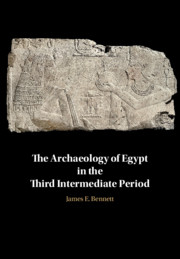Book contents
- The Archaeology of Egypt in the Third Intermediate Period
- The Archaeology of Egypt in the Third Intermediate Period
- Copyright page
- Dedication
- Contents
- Figures
- Maps
- Tables
- Preface
- Acknowledgements
- Chronological Tables
- Abbreviations
- Chapter One Terminology and Chronology
- Chapter Two Settlement Patterns and Land Policy
- Chapter Three Settlement Development and Built Remains of the Third Intermediate Period
- Chapter Four Domestic Material Culture of the Third Intermediate Period
- Chapter Five Conclusions: Transition and Continuity in the Third Intermediate Period
- Book part
- Notes
- Bibliography
- Index
Chapter Two - Settlement Patterns and Land Policy
Published online by Cambridge University Press: 31 August 2019
- The Archaeology of Egypt in the Third Intermediate Period
- The Archaeology of Egypt in the Third Intermediate Period
- Copyright page
- Dedication
- Contents
- Figures
- Maps
- Tables
- Preface
- Acknowledgements
- Chronological Tables
- Abbreviations
- Chapter One Terminology and Chronology
- Chapter Two Settlement Patterns and Land Policy
- Chapter Three Settlement Development and Built Remains of the Third Intermediate Period
- Chapter Four Domestic Material Culture of the Third Intermediate Period
- Chapter Five Conclusions: Transition and Continuity in the Third Intermediate Period
- Book part
- Notes
- Bibliography
- Index
Summary
Chapter 2 establishes the theoretical and archaeological context for the study of landscape and settlements in the Third Intermediate Period. It discusses the approaches to and problems inherent in Egyptian settlement studies regarding landscape reconstruction, the preservation of ancient sites, and defining the concept of ‘site’. The chapter constructs a framework for the understanding of settlement archaeology in the Third Intermediate Period through the analysis of a dataset made up of Third Intermediate Period textual and archaeological material from landscapes and settlements. It further outlines the archaeological theory regarding landscape archaeology in order to establish a methodology for the most effective way of approaching Egyptian settlement patterns and defining the concept of what is a ‘site’ in Egyptian settlement archaeology. The comprehensive record of survey, excavation reports, and artefact/textual source analysis compiled in Appendix 1 is used in Chapter 2 to evaluate the potential for conducting landscape archaeology to see whether settlement patterns are visible, the extent to which they are different from the New Kingdom, and the factors which may have influenced these patterns with due regard to the limitations of the data.
Keywords
- Type
- Chapter
- Information
- Publisher: Cambridge University PressPrint publication year: 2019

